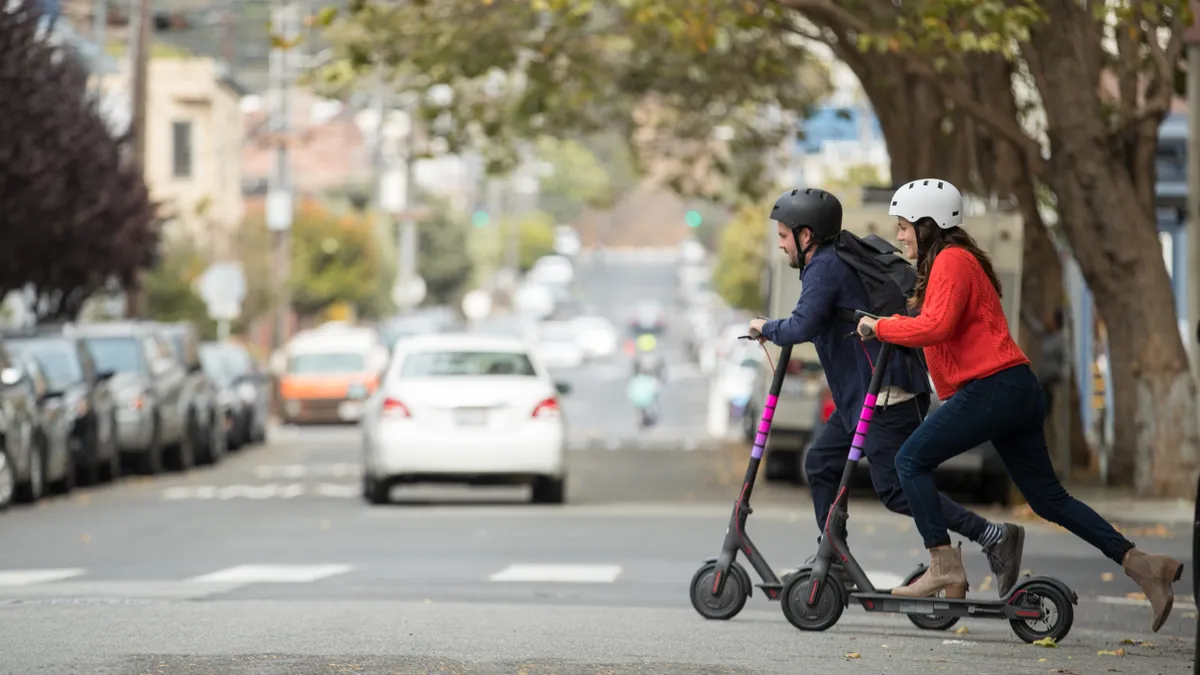Dive Brief:
-
Singapore, Amsterdam, London, Shanghai and New York are the five global cities best prepared overall for new mobility, according to a new report, Mobility as a Service: A Sum of Parts Present Today, by management consulting firm Oliver Wyman and insurance broking and risk management company Marsh.
-
The cities were chosen for having a "healthy combination" of existing infrastructure, quick technology adoption, future-looking policies and engaged private sectors. Cities at the bottom of the ranking — Mexico City, Bangkok, Mumbai, Cairo and Johannesburg — were denoted for chronic infrastructure issues and limited public and private sector investments.
-
The report outlines the role that the insurance industry and actuarial science should play to help cities, consumers and private companies understand the risks and complexities associated with these new mobility options.
Dive Insight:
Micromobility has caught cities by storm, and many city leaders are scrambling to catch up to the booming industry and its associated risks. Ride-hailing, for example, is projected to be worth $200 billion by 2023, while the scooter industry has captured almost half of the global micromobility landscape since it burst onto the scene in 2018.
While most countries and states mandate that drivers have auto liability insurance, for example, the same can’t be said for the micromobility industry. Some regulators are considering a "risk-shifting" approach to scooter or bike users, and while it’s still too early to know how that will play out, Europe and the U.S. will set the pace, according to the report.
"Insurance is almost like a proxy for public trust," Rob Bauer, U.S. sharing economy and mobility practice lead at Marsh, told Smart Cities Dive. He said if people and cities see that the insurance market can insure new forms of mobility, like scooters, their trust in mobility increases.
While ride-hailing giants have been criticized for adding to congestion and pollution, Uber and Lyft are increasingly gaining a foothold in the larger mobility industry by positioning their apps as one-stop-shops for public transit, scooters and e-bikes, which impacts how these companies approach insurance. There is also a renewed focus to make the ride-share experience more safe and cost-effective with the introduction of on-demand electric, autonomous vehicles (AVs), or "robo-taxis."
The global robo-taxi industry could increase 113% by 2030, lowering the cost of car ownership and reducing crashes by about 70%. With more transportation network companies making the switch to robo-taxis, the regulatory and safety risks associated with drivers or "gig workers" would be "drastically reduced," according to the report.
New vehicle companies like Waymo and Tesla are also working to enter the robo-taxi space. Tesla plans to undermine Uber or Lyft’s services with low costs; a Tesla robo-taxi, for example, would cost under $0.18 per mile compared to $2-$3 in current ride-share cost. Cooperation with local government, necessary infrastructure and effective partnerships will be essential for success, the report says.
"Mobility is about wheels on public streets," Bauer said. "And whether it’s a small scooter wheel or a large truck wheel or an AV wheel or anything in-between, it really boils down to: Can it be insured? And can it be insured at a reasonable rate? If the answer to all those things is yes, the public and government will be more comfortable using these new forms of mobility."












